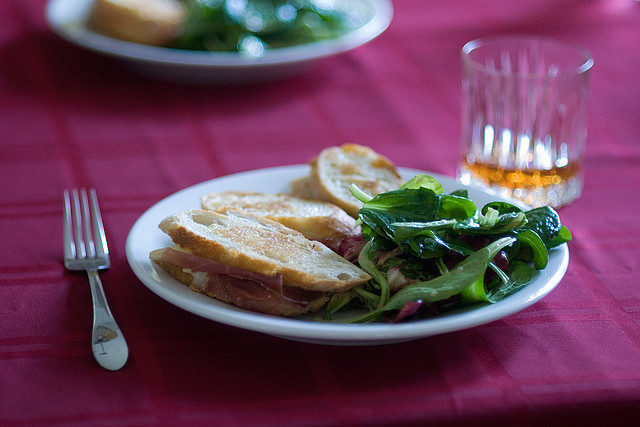Things That Are Surprisingly New: Forks, Lunch, Huge Drinks
Who knew that there existed a time when some of our staples of modern eating habits — the use of forks, the existence of lunch, and, unfortunately, the ubiquitous super-sized drinks found at every fast food chain around the U.S — did not exist.
Forks are taken for granted in modern western eating, yet relatively recently no such thing existed. We made do with spoons, and ax-like knives. Slate’s Sara Goldsmith elaborates:
The fork is a latecomer to the table. The shape of the fork has been around a lot longer than the eating utensil. In ancient Greece, Poseidon brandished a trident while mortals had large forked tools to pull food out of boiling pots. But the fork didn’t have a place at the Greek table, where people used spoons, knife points, and their hands.
In the Middle Ages, forks were used to impale the occasional slow-roasted suckling pig, but were certainly not an everyday object. Most of them were two-pronged, like the skewers we use today for flipping a steak on the grill. It took years for the fork to take hold in society, and even then it adopted with great reluctance.
Even as the fork gained ground, it was not universally accepted. As Ferdinand Braudel notes in The Structure of Everyday Life, around the beginning of the 18th century, Louis XIV forbade his children to eat with the forks that their tutor had encouraged them to use. But by the middle of the century, the use of the fork had become sufficiently normal that rebukes were reserved for those who used forks incorrectly.
By the beginning of the 19th century, the French had a change of mind. The bourgeoisie adopted and popularized the fork.
Once the fork became a daily staple, it, like so many other household objects of the 20th century, was pressed into the service of style.
There were slinky Italian forks in the 1930s, colorful Bakelite forks in the 1940s, architect-designed forks with three tines in the 1950s and five tines in the 1970s, neon plastic forks in the 1980s, postmodern forks in the 1990s, and, in the 2000s, sci-fi forks and quirky forks. Even artists like Alexander Calder jumped on the bandwagon.
Now that we could get the food to our mouth, it was time to modernize our eating regimes. Edible Geography takes a step back, exploring the origin of contemporary lunch, as inspired by a new NYC exhibition on the tasty topic:
As late as 1755, according to Samuel Johnson’s definition, lunch was simply “as much food as one’s hand can hold” — which, as Laura Shapiro, culinary historian and co-curator of the New York Public Library’s new Lunch Hour NYC exhibition, recently explained to me, “means that it’s still sort of a snack that you can have at any time of the day.”
Around 1850, regular snacking—the prequel to lunch—took place at random intervals between breakfast and dinner. We’d almost hit the lunchbox jackpot, but not quite.
Finally, by the turn of the century, “lunch was taking place between 12 and 2, more or less,” concludes Shapiro. It was a real meal at last, with a time associated with it, and particular foods and places assigned to it.
We’ve got the utensils and the meal, but how about the food? Unfortunately, that last evolution was all downhill. Or uphill, depending on how you look at it. The super-sizing of US fast food was nearly exponential between 1955 and today.
Mother Jones reports on the progression:
When McDonald’s execs first struck up their lucrative business partnership with the Coca-Cola Company in 1955, they were thinking small—literally. At the time, the only size of the beverage available for purchase was a measly 7-ounce cup. But by 1994, America’s classic burger joint was offering a fountain drink size six times bigger.
And that’s not even the worst of it. Franchises like 7-Eleven, Arco, and the unfortunately named Midwestern chain Kum & Go have all offered drinks upwards of 85 ounces. (To put this in perspective, this is around three times the capacity of a normal human stomach.)
Luckily, this latest trend will soon retreat into the annals of history if Mayor Bloomberg has anything to say about it.
More from Smithsonian.com:
How America Became a Food Truck Nation
/https://tf-cmsv2-smithsonianmag-media.s3.amazonaws.com/accounts/headshot/Rachel-Nuwer-240.jpg)

/https://tf-cmsv2-smithsonianmag-media.s3.amazonaws.com/accounts/headshot/Rachel-Nuwer-240.jpg)